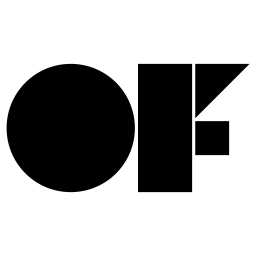In computing, cross-platform software is computer software that is designed to work in several computing platforms. Some cross-platform software requires a separate build for each platform, but some can be directly run on any platform without special preparation, being written in an interpreted language or compiled to portable bytecode for which the interpreters or run-time packages are common or standard components of all supported platforms.

Processing is a free graphical library and integrated development environment (IDE) built for the electronic arts, new media art, and visual design communities with the purpose of teaching non-programmers the fundamentals of computer programming in a visual context.
Extensible Application Markup Language is a declarative XML-based language developed by Microsoft for initializing structured values and objects. It is available under Microsoft's Open Specification Promise.
A Rich Internet Application is a web application that has many of the characteristics of desktop application software. The concept is closely related to a single-page application, and may allow the user interactive features such as drag and drop, background menu, WYSIWYG editing, etc. The concept was first introduced in 2002 by Macromedia to describe Macromedia Flash MX product. Throughout the 2000-s, the term was generalized to describe browser-based applications developed with other competing browser plugin technologies including Java applets, Microsoft Silverlight.
IronPython is an implementation of the Python programming language targeting the .NET Framework and Mono. The project is currently maintained by a group of volunteers at GitHub. It is free and open-source software, and can be implemented with Python Tools for Visual Studio, which is a free and open-source extension for Microsoft's Visual Studio IDE.
Netscape Plugin Application Programming Interface (NPAPI) is a deprecated application programming interface (API) of the web browsers that allows plugins to be integrated.
A GIS software program is a computer program to support the use of a geographic information system, providing the ability to create, store, manage, query, analyze, and visualize geographic data, that is, data representing phenomena for which location is important. The GIS software industry encompasses a broad range of commercial and open-source products that provide some or all of these capabilities within various information technology architectures.
The Windows Communication Foundation (WCF), previously known as Indigo, is a free and open-source runtime and a set of APIs in the .NET Framework for building connected, service-oriented applications.
MooTools is a lightweight, object-oriented JavaScript framework. It is released under the free, open-source MIT License.

Microsoft Silverlight is a discontinued application framework designed for writing and running rich internet applications, similar to Adobe's runtime, Adobe Flash. A plugin for Silverlight is still available for a very small number of browsers. While early versions of Silverlight focused on streaming media, later versions supported multimedia, graphics, and animation, and gave support to developers for CLI languages and development tools. Silverlight was one of the two application development platforms for Windows Phone, but web pages using Silverlight did not run on the Windows Phone or Windows Mobile versions of Internet Explorer, as there was no Silverlight plugin for Internet Explorer on those platforms.
Comparison of the Java and .NET platforms.

openFrameworks is an open source toolkit designed for creative coding founded by Zachary Lieberman, Theo Watson and Arturo Castro. OpenFrameworks is written in C++ and built on top of OpenGL. It runs on Microsoft Windows, macOS, Linux, iOS, Android and Emscripten. It is maintained by its founders with contributions by other members of the openFrameworks community.
WebORB is an integration server developed and maintained by Midnight Coders Incorporated. It is used in SOA/Rich Internet Application development projects to connect browser clients and mobile clients with backend services and databases. It combines technologies that provide developer productivity tools, AMF remoting, real time messaging, code-level security and real time streaming media.
Microsoft Silverlight is an application framework for writing and running rich web applications that was actively developed and marketed by Microsoft from 2007 to 2012. This is a technical overview of the platform's history.
Windows Runtime (WinRT) is a platform-agnostic component and application architecture first introduced in Windows 8 and Windows Server 2012 in 2012. It is implemented in C++ and officially supports development in C++, Rust/WinRT, Python/WinRT, JavaScript-TypeScript, and the managed code languages C# and Visual Basic .NET (VB.NET).

Mono is a free and open-source .NET Framework-compatible software framework. Originally by Ximian, it was later acquired by Novell, and is now being led by Xamarin, a subsidiary of Microsoft and the .NET Foundation. Mono can be run on many software systems.
Front-end web development is the development of the graphical user interface of a website, through the use of HTML, CSS, and JavaScript, so that users can view and interact with that website.



